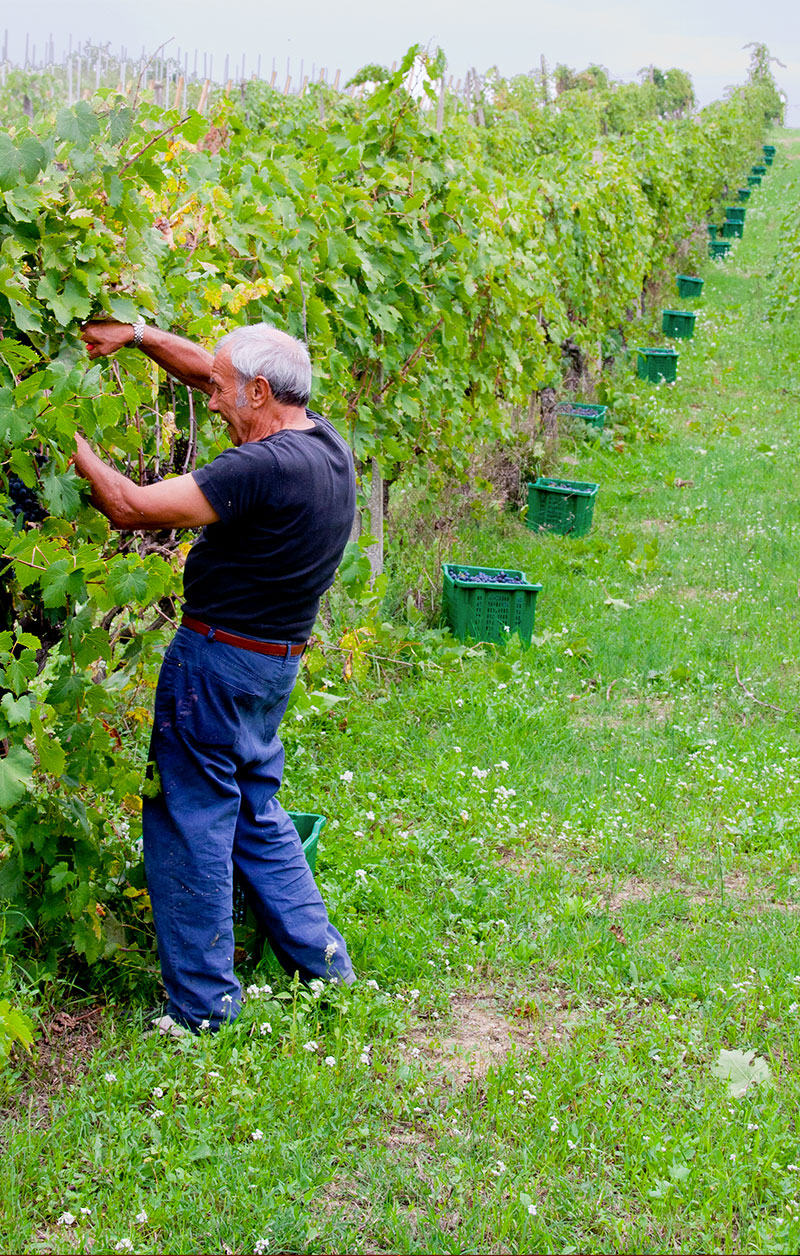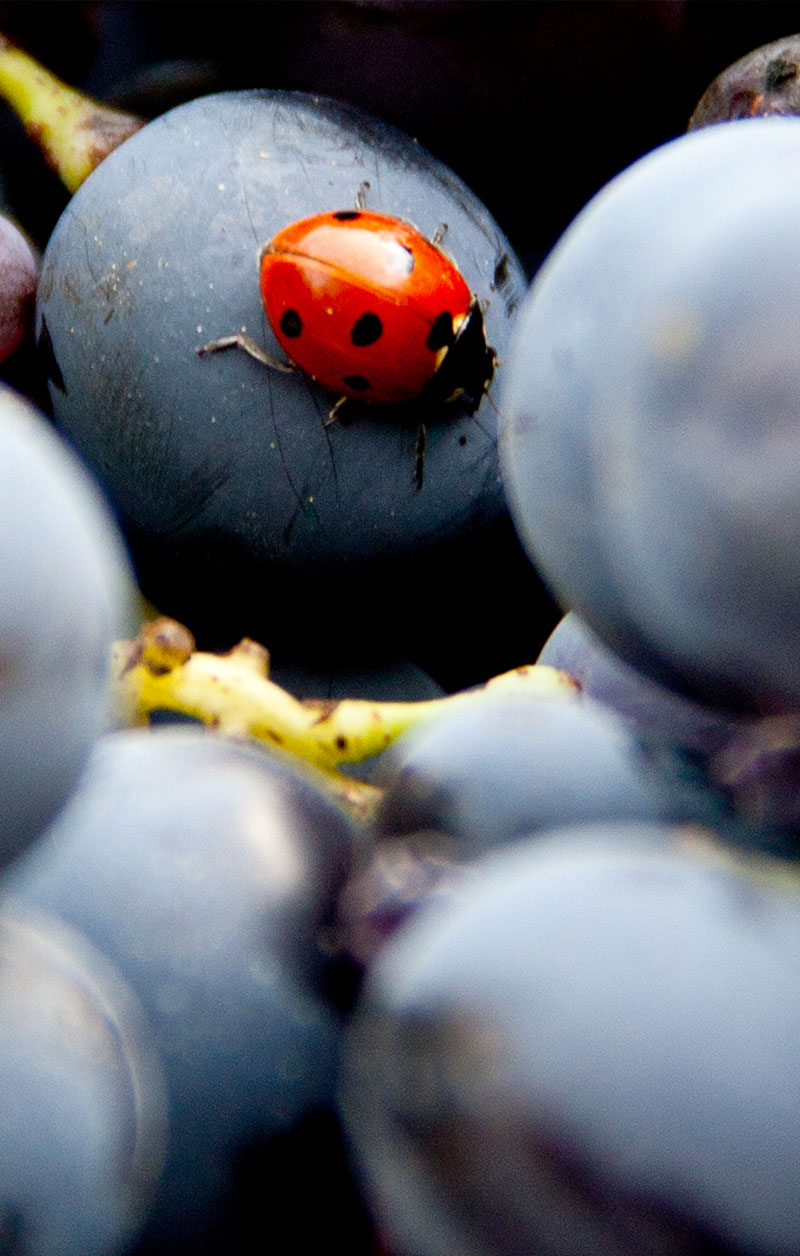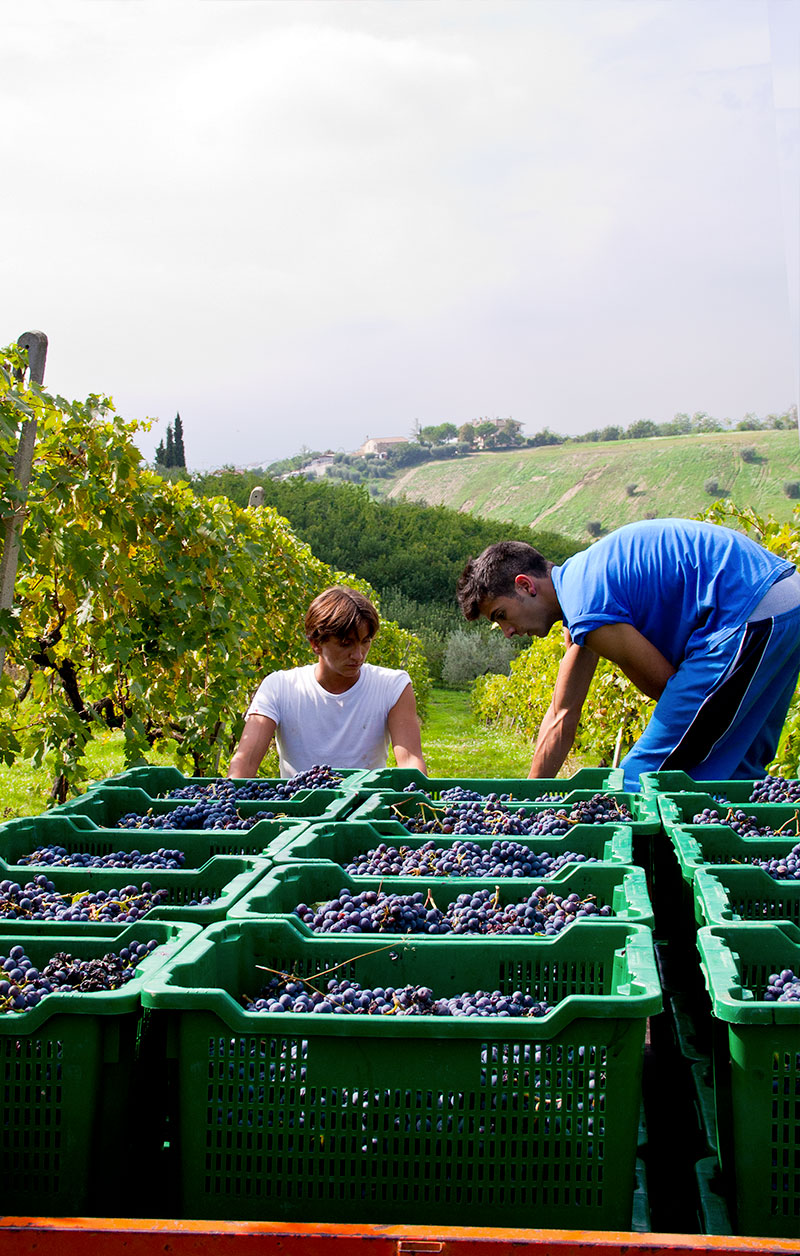Sustainability
To ensure that our entire production cycle is in harmony with the environment we meticulously plan each operation in the vineyard and the cellar using renewable energy. In order to achieve the highest quality fruit and healthy vineyards we use organic plant based compost and we refuse to use chemical additives or animal derivative.
The pruned canes, pomace and spent yeast are the fertilizers for our vineyards. We harvest the grapes manually and once in the cellar we use traditional and minimally invasive processing techniques without chemically synthesized products and with respect for a vegan-cruelty free philosophy. The production facility, aging room and tasting room are thermally insulated from the external environment and the barrel room is built below ground level in order to maintain a cool constant temperature without the use of air conditioning. The cellar also benefits from a solar panel system that covers 80% of the annual energy requirement. We also capture and repurpose cleaning water from the cellar to irrigate our garden. For our wines we use lightweight glass bottles and labels made of natural paper featuring art from local artists, as we believe sustainability is also an expression of and support of the local community.
It is not uncommon to come across mulberry trees which testify to the ancient local tradition of silkworm breeding for silk production. Archaeological Finds dating back to the Neolithic period tell of a region that has always been ideal for human settlement and witness to the millennial development of agriculture.


